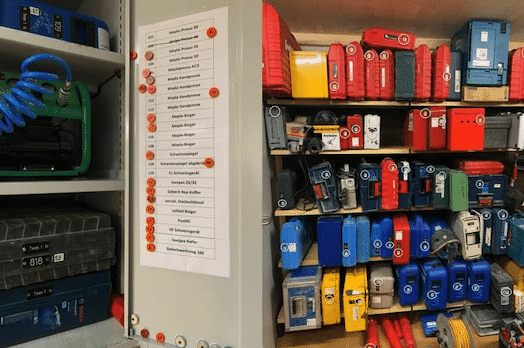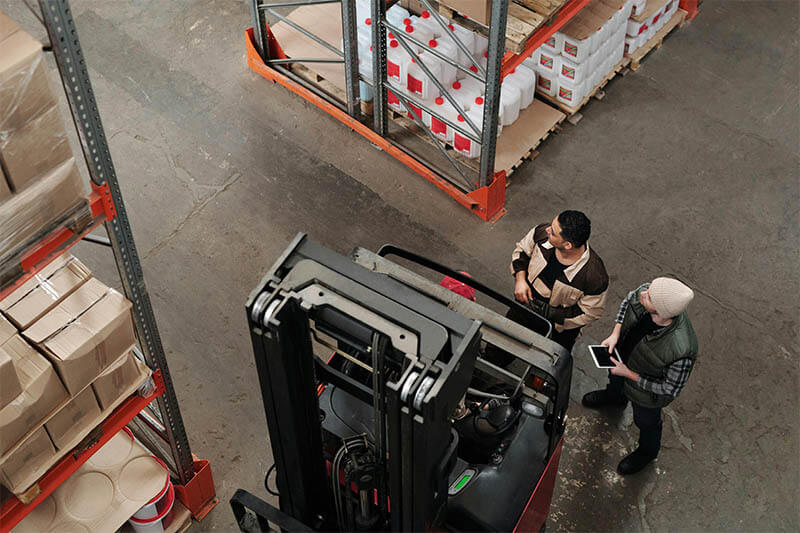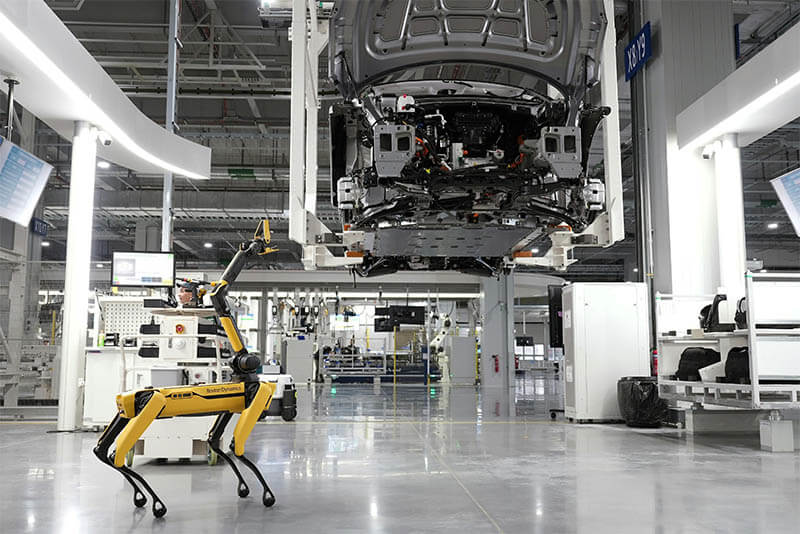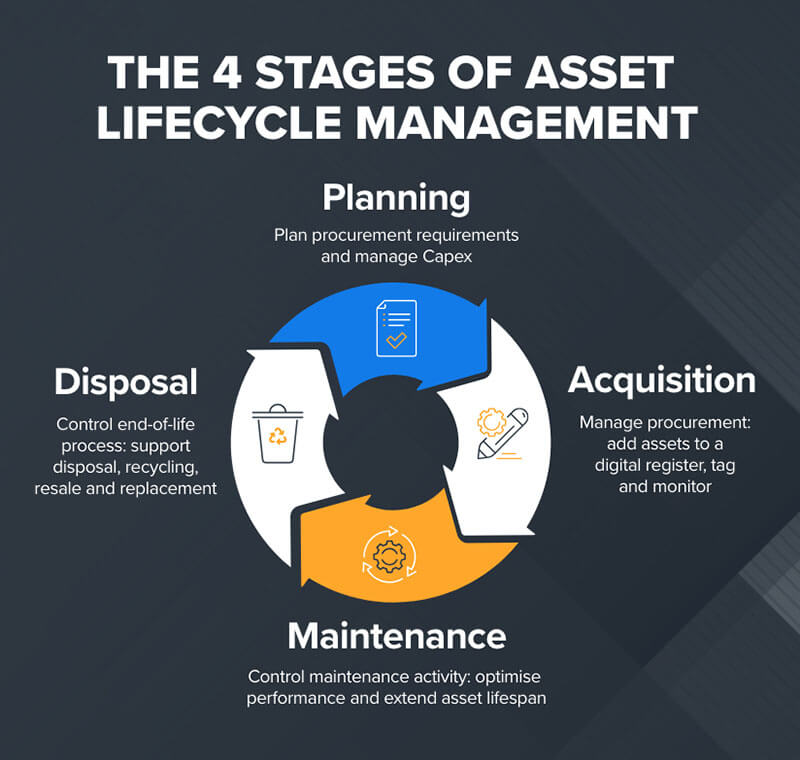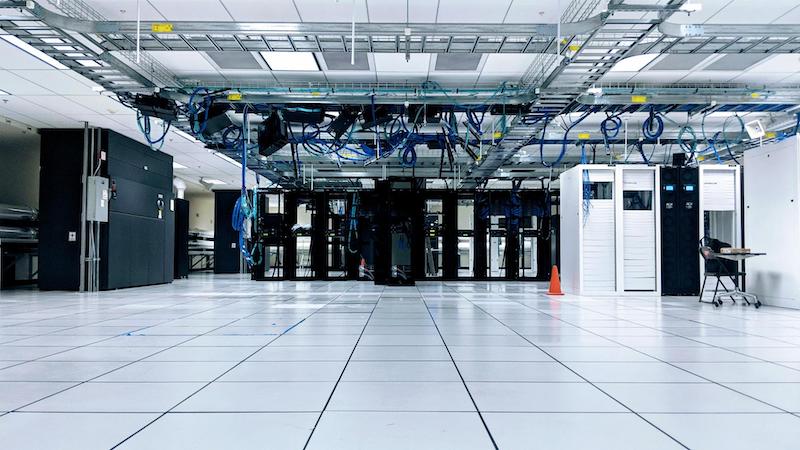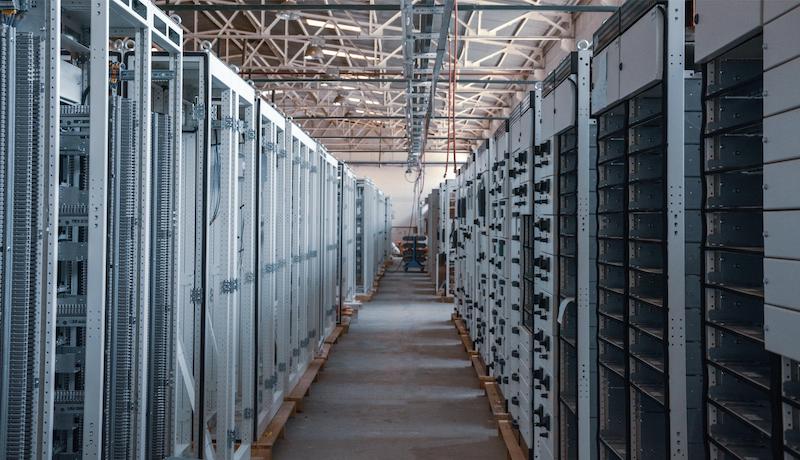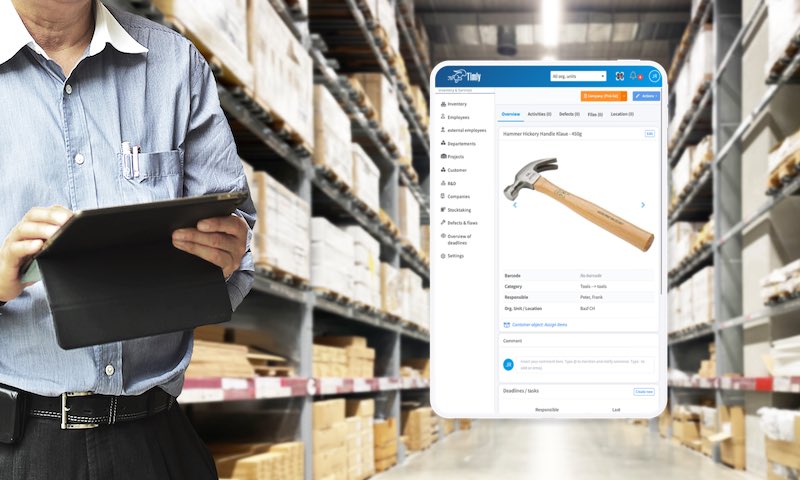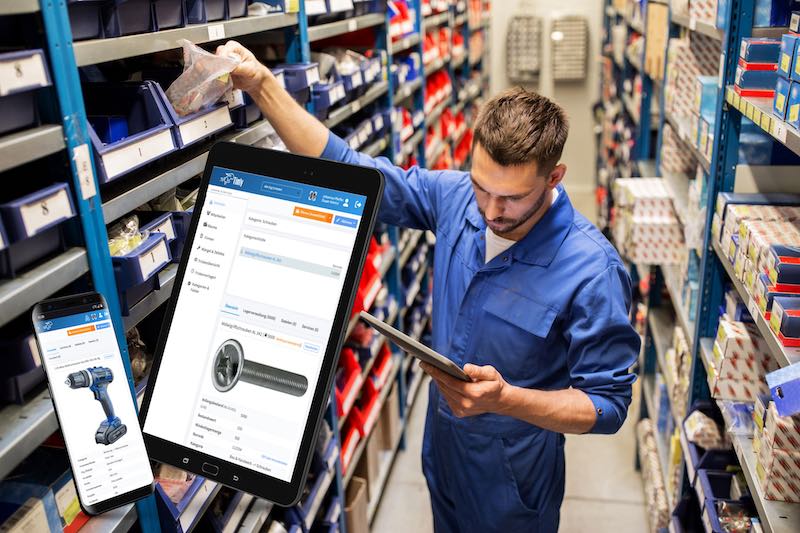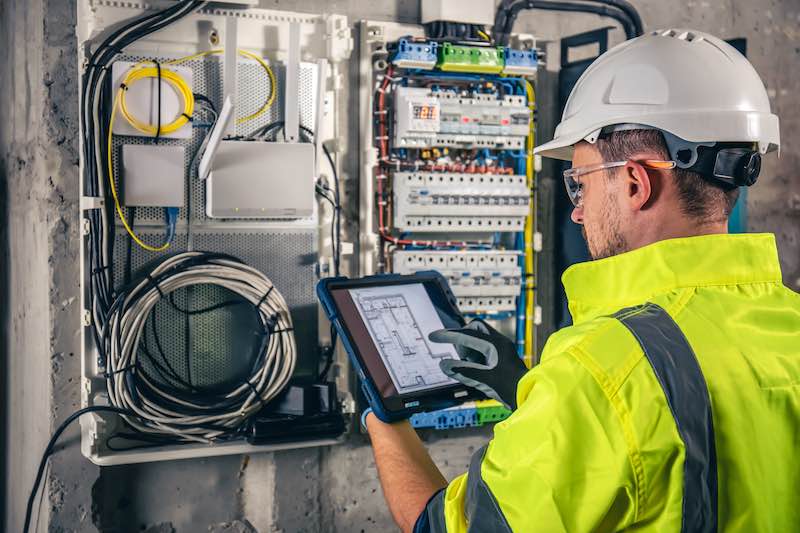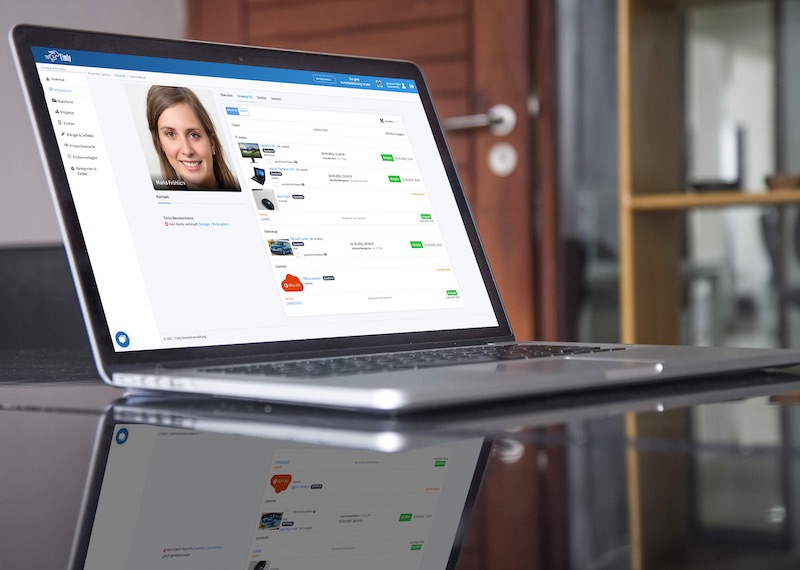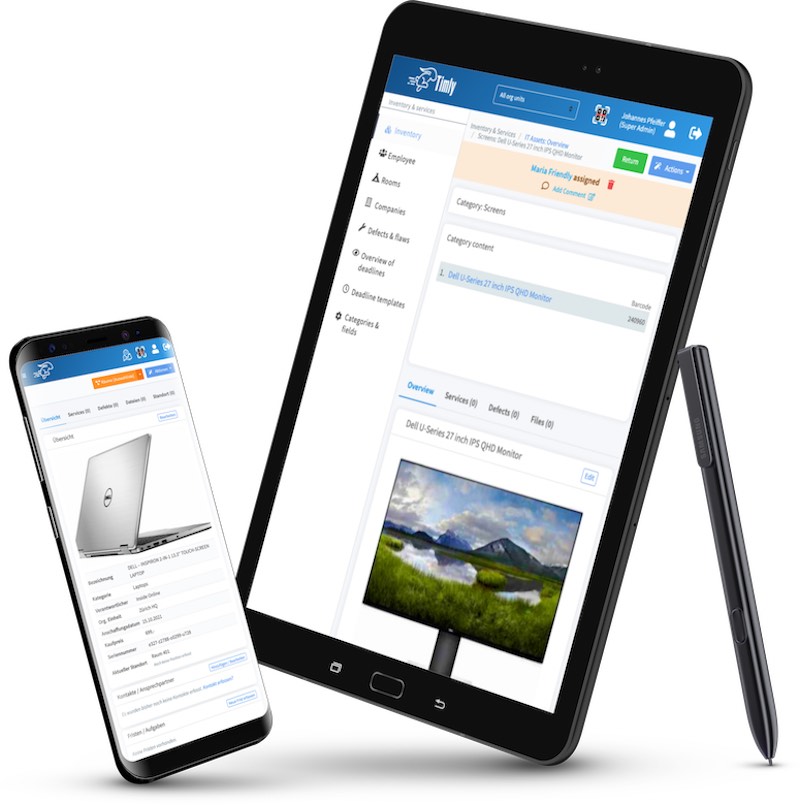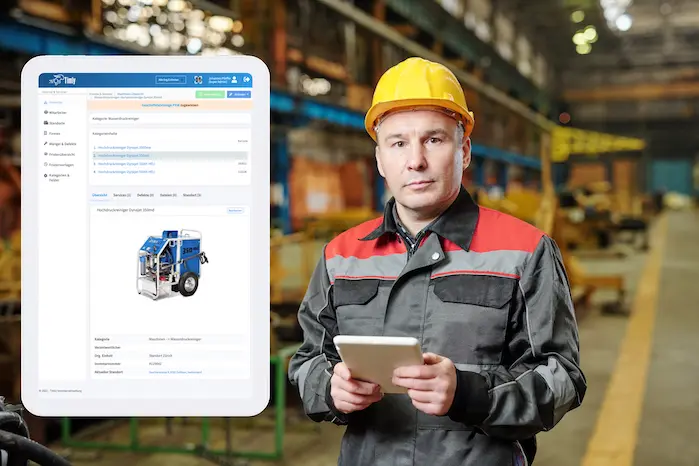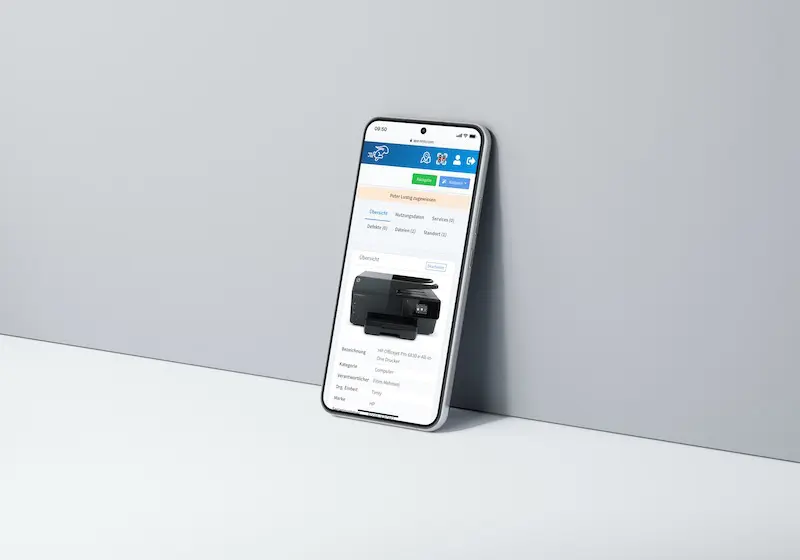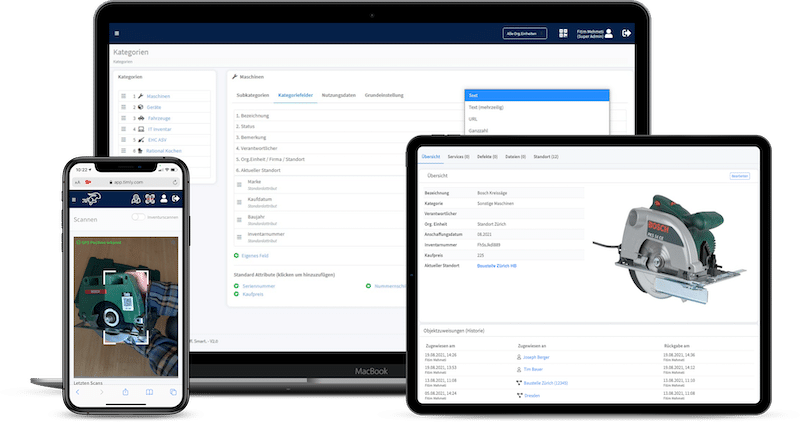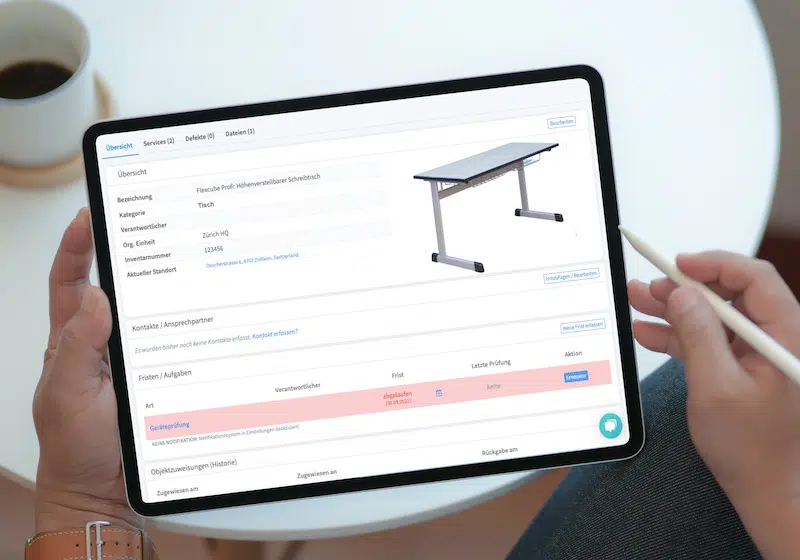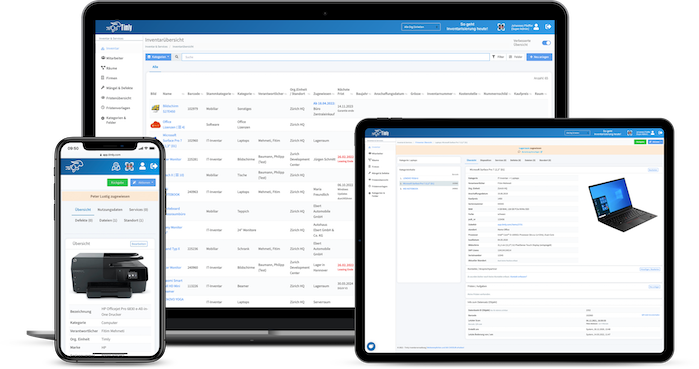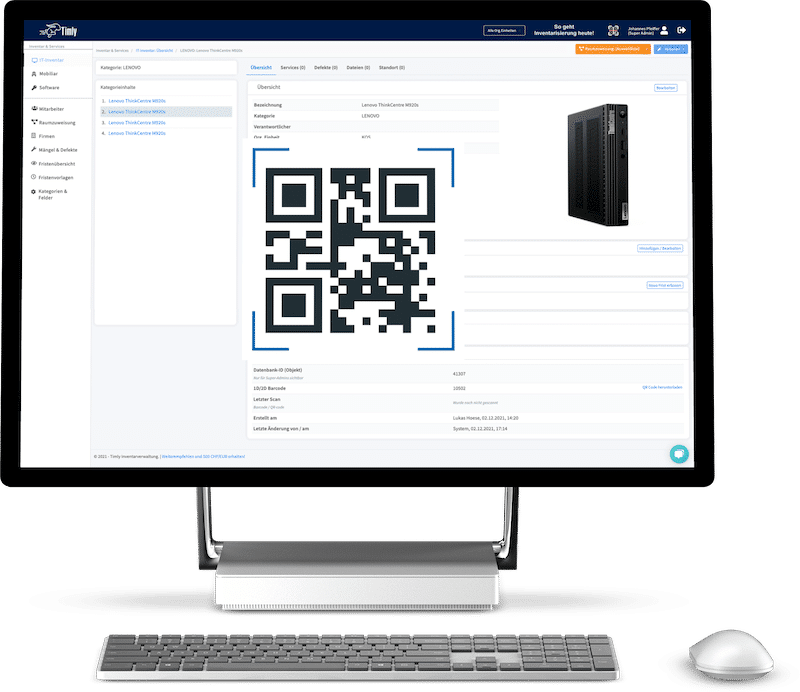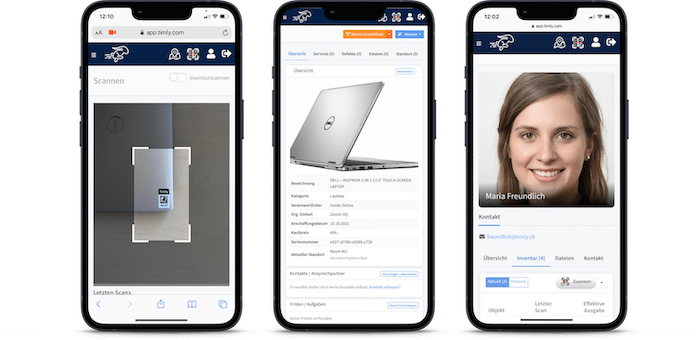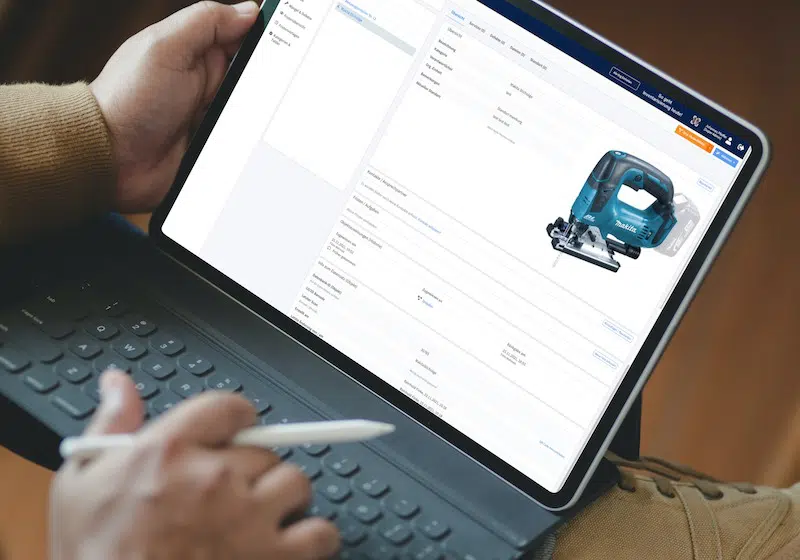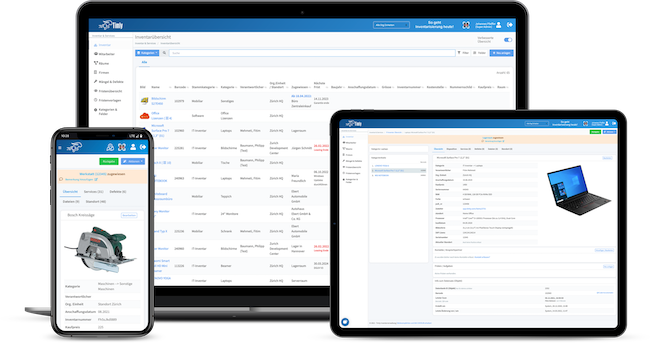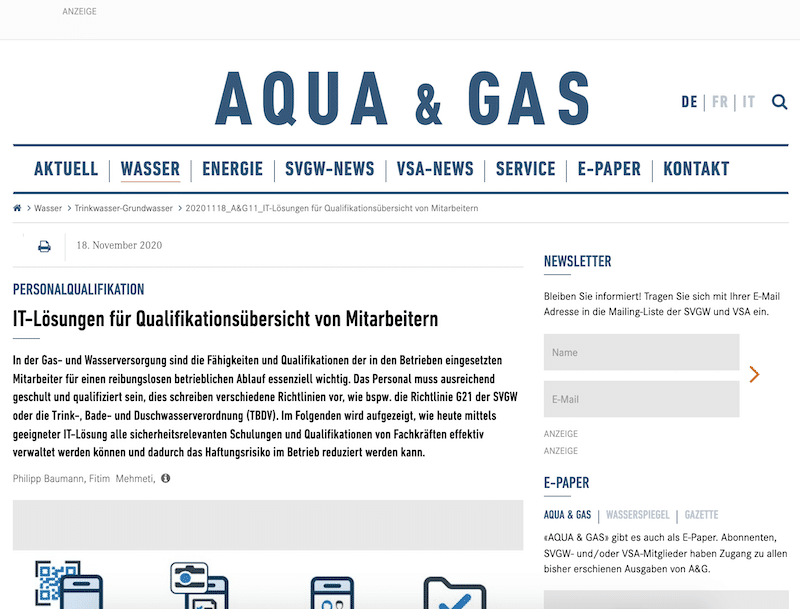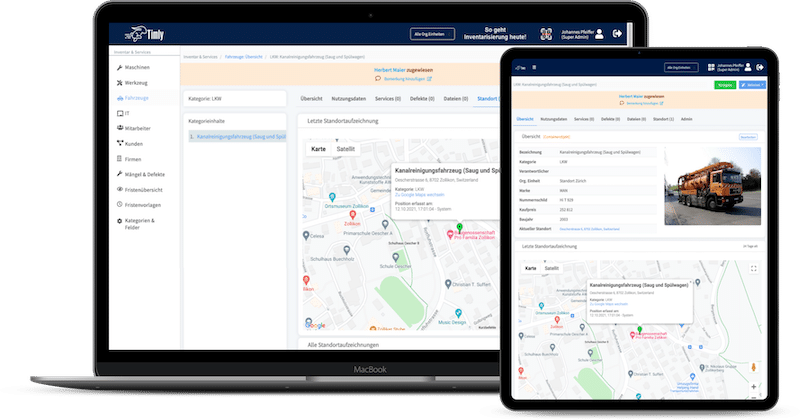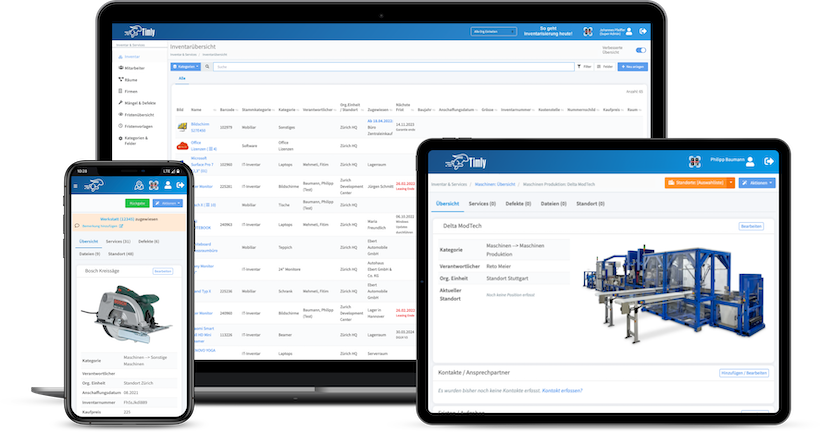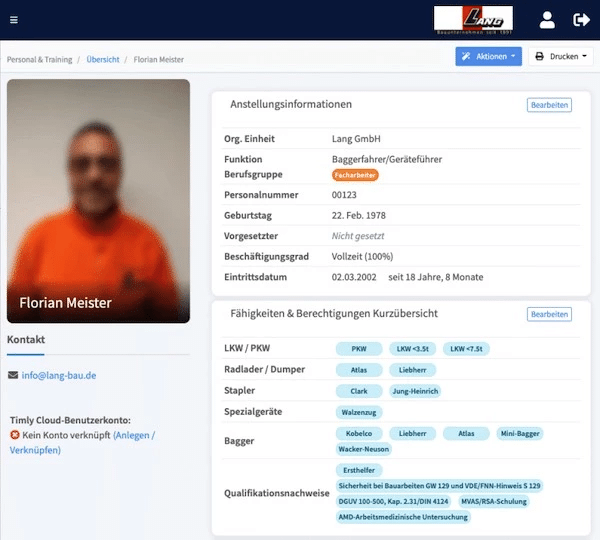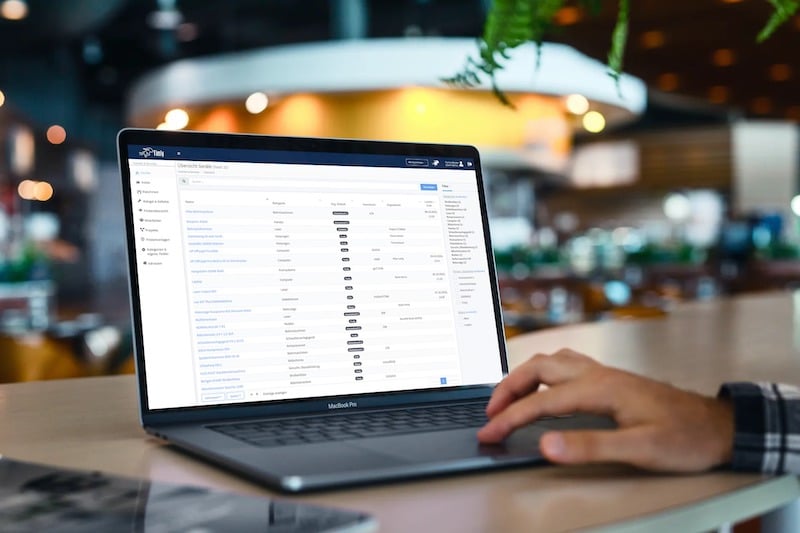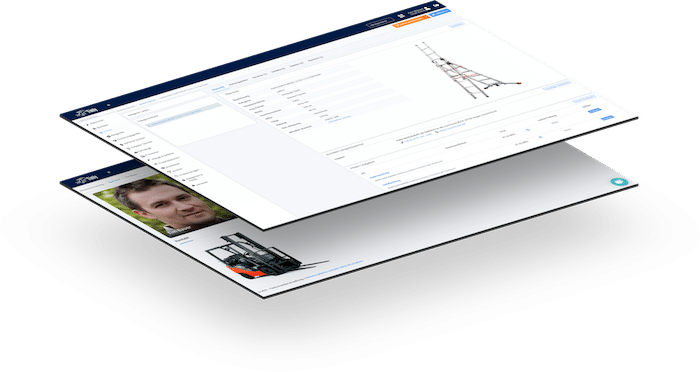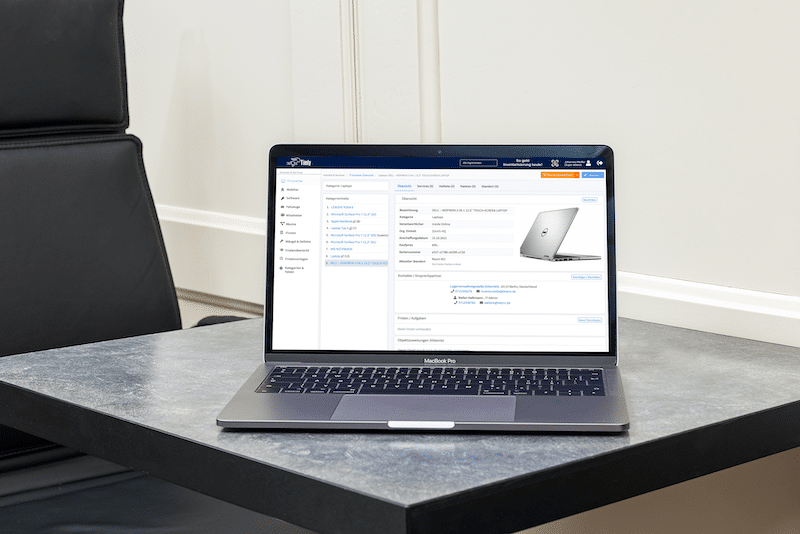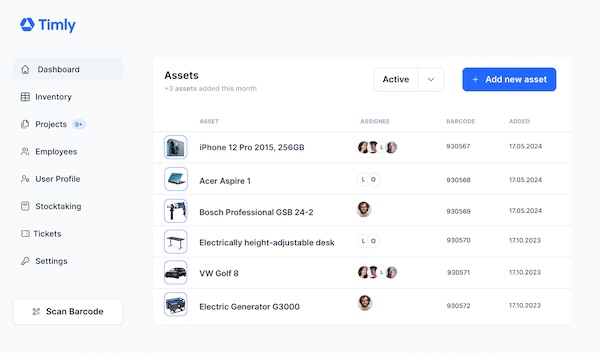
Key Takeaways:
- A perpetual inventory system offers continuous tracking of inventory in real-time, reducing discrepancies and errors.
- A perpetual inventory system automates inventory tracking processes, streamlining tasks such as ordering and replenishing stock.
- Organizations can gain information about inventory replenishment and pricing strategies that lead to enhanced profit margins and customer satisfaction.
In This Article:
- What Are the Key Advantages of a Perpetual Inventory System?
- Who Benefits Most From a Perpetual Inventory System?
- Cost-Benefit Analysis of Perpetual Inventory Stock-Taking
- How to Implement a Perpetual Inventory System?
- Asset Management Software in Use by Our Customers
- Perpetual Inventory Advantages Over Periodic Inventory
- What Are the Limitations of Perpetual Inventory Systems?
- Frequently Asked Questions About Advantages of a Perpetual Inventory System
What Are the Key Advantages of a Perpetual Inventory System?
- Continuously tracking inventory levels in real-time within the organization, providing up-to-date information on stock numbers, and reducing discrepancies and errors associated with manual or periodic data entry.
- Automating inventory tracking processes, enhances efficiency by streamlining tasks such as ordering, receiving, and replenishing stock, thus saving time and resources.
- Providing organizations with actionable insights to identify inventory performance and trends. By analyzing real-time data on stock levels, sales trends, and customer demand, businesses can make informed decisions regarding inventory replenishment, pricing strategies, and product promotions, leading to improved profit margins and customer satisfaction.
Overall, the advantages of a perpetual inventory system focus on enhancing accuracy, efficiency, and decision-making in inventory management, ultimately driving improved operations and a competitive edge in the organization’s business.
What Is the Major Advantage of Using a Perpetual Inventory System?
Organizations can make informed decisions based on real-time visibility, monitoring stock levels, analyzing inventory sales and demand trends, and identifying additional inventory needs. This optimization of inventory levels helps improve operational efficiency by reducing stockouts and overstocking.
Additionally, perpetual inventory systems provide real-time data that enhances customer service by ensuring timely availability and shipment of items. The up-to-date inventory information enables organizations to provide prompt feedback to customers, process orders efficiently, and ensure timely delivery.
In summary, the major advantage of a perpetual inventory system lies in its ability to provide real-time visibility, enabling organizations to make better decisions, improve inventory management, operational efficiency, and customer service.
Who Benefits Most From a Perpetual Inventory System?
Real-world examples of how perpetual inventory systems are used include:
Manufacturing:
E-commerce:
Perpetual inventory systems play a crucial role in the e-commerce sector’s expansion efforts. They provide control over merchandise online and improve customer service.
Humanitarian:
Real-time updates in inventory management are crucial for the humanitarian sector. Staff need to know the available items to enhance mission-critical operations and operational efficiency.
Is Perpetual Inventory System Suitable for All Business Types?
If you’re contemplating whether perpetual inventory systems are suitable for all business types, look no further. This system benefits industries of all sizes, with some companies experiencing significant advantages due to complex supply chains or high turnover rates. However, the key lies in the real-time visibility it provides, extending its benefits to all businesses.
Whether your business operates in a brick-and-mortar or online setting, perpetual inventory systems can handle various products, track sales trends, and optimize stock levels. In the manufacturing industry, these systems are used to monitor raw materials, work in progress, and finished goods.
Moreover, the healthcare and hospitality industries can also benefit from perpetual inventory systems, efficiently managing supplies, equipment, and other items. Take Toyota, for example, which utilizes perpetual inventory across its automobile network to manage its complex supply chain with just-in-time production.
With various implementation methods, perpetual inventory systems can streamline operations, improve efficiency, and enhance scalability across diverse industries.
What Are the Benefits of Perpetual Inventory System for Retailers?
The benefits that retailers gather from using a perpetual inventory system include improved accuracy, streamlined operations, and enhanced customer satisfaction.
- Real-time inventory tracking ensures that products are always available, minimizing stockouts and maximizing customer satisfaction.
- Compared to manual data entry, which increases the risk of errors and discrepancies, perpetual inventory allows for more accurate record-keeping.
- Real-time visibility into inventory levels helps optimize stock levels, reducing excess inventory and carrying costs.
- Perpetual inventory systems enable orders to be fulfilled promptly, enhancing the overall customer experience.
One example of a retail company benefiting from this is Target. By implementing a perpetual inventory system, the company was able to track its inventory in real-time and automate its inventory management processes. Additionally, the company’s supply chain has significantly improved, leading to enhanced inventory accuracy and customer satisfaction.
In summary, retailers can benefit from perpetual inventory systems by implementing real-time tracking technology and automating their inventory management processes. This leads to improvements in supply chain efficiency, inventory accuracy, and customer service.
Over 600 Companies, Schools and Cities Rely on Timly
(No credit card required)
Cost-Benefit Analysis of Perpetual Inventory Stock-Taking
Firstly, organizations benefit from real-time visibility of inventory, which helps reduce errors and discrepancies. Secondly, efficiency increases as inventories are continuously tracked, eliminating the need for manual stock-taking and saving time and resources. Thirdly, real-time data enables organizations to make better decisions, leading to cost savings and optimized resource allocation.
Regarding costs, upfront expenses include software, hardware, and training. Ongoing costs such as hardware maintenance, software upgrades, and staff training must also be considered. Additionally, integration with other software may incur additional expenses, all of which need to be factored into the cost analysis.
By analyzing both benefits and costs, organizations can determine the necessity of a perpetual inventory system. Other factors to consider include business size and return on investment (ROI) after system implementation.

How Much Does It Cost to Switch to a Perpetual Inventory System?
For organizations considering switching to a perpetual inventory system, several factors need consideration, including business size, inventory management needs, and selecting the right service provider.
Initially, there are investments required, such as purchasing or subscribing to inventory management software, ranging from a few hundred to a couple of thousand dollars, depending on features and scalability. Hardware needs, like barcode scanners or RFID readers, must also be factored in.
Additionally, hiring a consultant or IT professional for system implementation may incur additional costs. Ongoing expenses include investing in compatible hardware, staff training for effective system utilization, and budgeting for software updates, technical support, and hardware maintenance.
Integration costs for linking the system with other software or platforms should also be considered. Despite the initial and ongoing expenses, the increased accuracy and efficiency resulting from the system justify the costs.
How to Implement a Perpetual Inventory System?
There are several key factors that need to be looked into when wanting to implement a perpetual inventory system. These steps will provide you with a smooth transition and adoption of the system.
1. Analyze the organization’s current management processes and identify rooms for improvement. Once that is done, you will need to know your inventory’s requirements in terms of tracking, reporting, and integration with other systems.
2. You will then need to source the right inventory management software that is suitable for your organization’s needs and budget. Look and see if it is scalable, user-friendly, and compatible with the current system.
3. Customization is essential when it comes to your organization’s requirements, and thus, you will need to ensure that the inventory is customized to evaluate tracking, stock levels, reordering, and reporting functionality.
4. Always make sure that the staff is well-trained when it comes to using a new system, such as a perpetual inventory system. This is so that the staff can fully utilize and maximize the system to provide better efficiency within the organization.
5. Before signing off on the implementation, ensure that the system has been fully tested and also rectify any bugs in the teething stages. Moreover, feedback from staff who are using the software is crucial in order to optimize the performance of the system.
6. Ensure that the perpetual inventory system is rolled out in phases within the organization. That is, roll out from one department to the next so that you will have time to address any challenges or concerns that may arise.
These guidelines are crucial when you want to implement and install a perpetual inventory system within the organization. Hence, by doing so, you will then have better accuracy, efficacy, and decision-making within the organization.
The Advantages of Technological Tools for Perpetual Inventory Control System
The advantages of using technological tools for perpetual inventory control systems are that they enhance the efficiency and accuracy of the system. This provides many advantages, such as:
- Tools such as barcode scanners and RFID help automate data entry and inventory processes. They track inventory, reduce manual errors, and improve data accuracy.
- By using advanced software solutions, you will be able to obtain features such as real-time inventory tracking and customize reports for better operational efficiency.
- To have better decision-making and streamlined data sharing, it is imperative to integrate with an enterprise resource planning (ERP) system.
- By using these technological tools, you will have better efficiency in terms of technological impact because repetitive tasks are now automated and processes are streamlined. Additionally, with real-time updates, you will have better data accuracy and mitigate any risk of errors.
Using technological tools that Timly provides, such as barcode scanning for perpetual inventory systems, can ensure that organizations track and customize alerts, allowing them to stay up-to-date with stock levels, inventory movement, and make better decisions when using a perpetual inventory management system. Hence, these technological tools are added to improve efficiency, data accuracy, visibility, and control over their management operations.
Asset Management Software in Use by Our Customers
The Timly software is continuously evolving to meet the needs of our customers. In various success stories, we show you how Timly optimizes processes in companies, thereby saving significant effort. With Timly, inventory management becomes child’s play.

Optimized Device Management With Innovative Self-Inventory
SodaStream is the world market leader for water sparkling systems for domestic use and has a lot of IT equipment at its various locations. Many colleagues now work from their home offices. A digital solution for the efficient management of IT end devices became necessary...
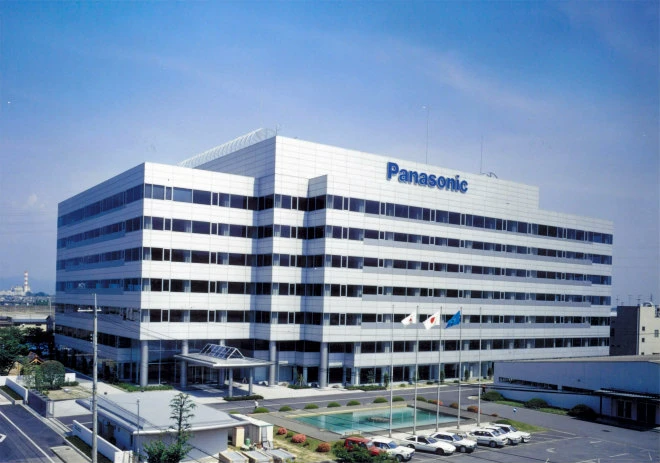
Panasonic x Timly: Driving Technological Innovation
One of the most remarkable aspects of human ingenuity is our ability to innovate. Innovation is embedded in the DNA of consumer electronics giant Panasonic, which has diversified into a number of sectors, from heavy industry to construction...
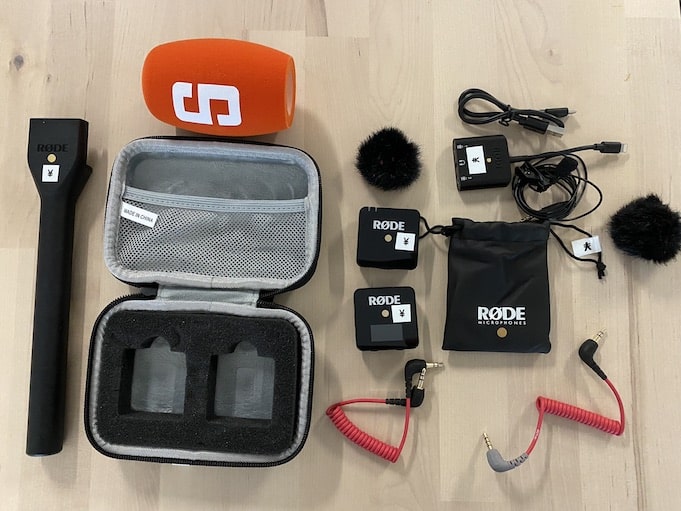
Manage Video Equipment Efficiently Without Much Effort
The Hamburg media company always does outstanding journalistic work and is characterized by independent reporting. In order to maintain journalistic quality, the teams work with highly specialized devices – these need to be managed efficiently...

Smart City Asset Management – Timly in Use at DIGOOH
The core business of DIGOOH Media GmbH in Cologne is to manage digital city light posters (DCLP) for outdoor use in various cities in Germany. The challenge here lies in making the client’s communication message always available at the right time, in the right place...
(No credit card required)
Perpetual Inventory Advantages Over Periodic Inventory
The difference between a periodic inventory system and an example of a perpetual inventory system lies in the way they track and manage inventory. Perpetual inventory offers several advantages in terms of efficiency and accuracy.
For instance, a perpetual inventory system continuously tracks inventory in real-time, unlike a periodic inventory system, which requires physical counts at intervals. This process is time-consuming and can disrupt operations. Additionally, a perpetual inventory system provides better accuracy at any given time, reducing discrepancies and errors. In contrast, periodic inventory systems are prone to more inaccuracies and errors due to their periodic counts.
Another advantage of a perpetual inventory system is that the data is always accessible, allowing organizations to obtain information at any given moment to make decisions.
In summary, perpetual inventory systems offer advantages over periodic inventory systems because they are efficient, accurate, provide continuous monitoring, and make data readily available. This makes them the better choice when selecting an inventory management system.
What Are the Limitations of Perpetual Inventory Systems?
As mentioned earlier, the perpetual inventory system offers numerous benefits. However, it also comes with certain limitations that organizations need to consider:
Firstly, there is an initial investment required for software, hardware, and training, which can be challenging for small organizations with limited budgets. Secondly, setting up and maintaining a perpetual inventory system can be complex, especially for larger businesses with extensive inventory. Integration with existing systems may pose challenges in such cases. Additionally, despite providing real-time data, the system is still susceptible to human errors, technological issues, and even theft.
To address these challenges, organizations should ensure proper training is provided to effectively use the system. Regular maintenance is essential to keep the inventory system operational. Scheduled audits help reduce inaccuracies and discrepancies. Integrating the perpetual inventory system with accounting or procurement software can streamline operations by consolidating information on one platform.
Overall, by recognizing and addressing the limitations of the perpetual inventory system, organizations can maximize its benefits and mitigate potential challenges.
Frequently Asked Questions About Advantages of a Perpetual Inventory System
What Are the Key Advantages of a Perpetual Inventory System?
A perpetual inventory system offers numerous advantages for accurate and efficient inventory management processes. It operates by continuously tracking inventory levels in real-time within the organization, providing up-to-date information on stock numbers, and reducing discrepancies and errors associated with manual or periodic data entry.
Automating inventory tracking processes enhances efficiency by streamlining tasks such as ordering, receiving, and replenishing stock, thus saving time and resources. Providing organizations with actionable insights to identify inventory performance and trends.
How Much Does It Cost to Switch to a Perpetual Inventory System?
Recommended for You:
Book an online demo - free and without obligation - or create your free trial account directly.















